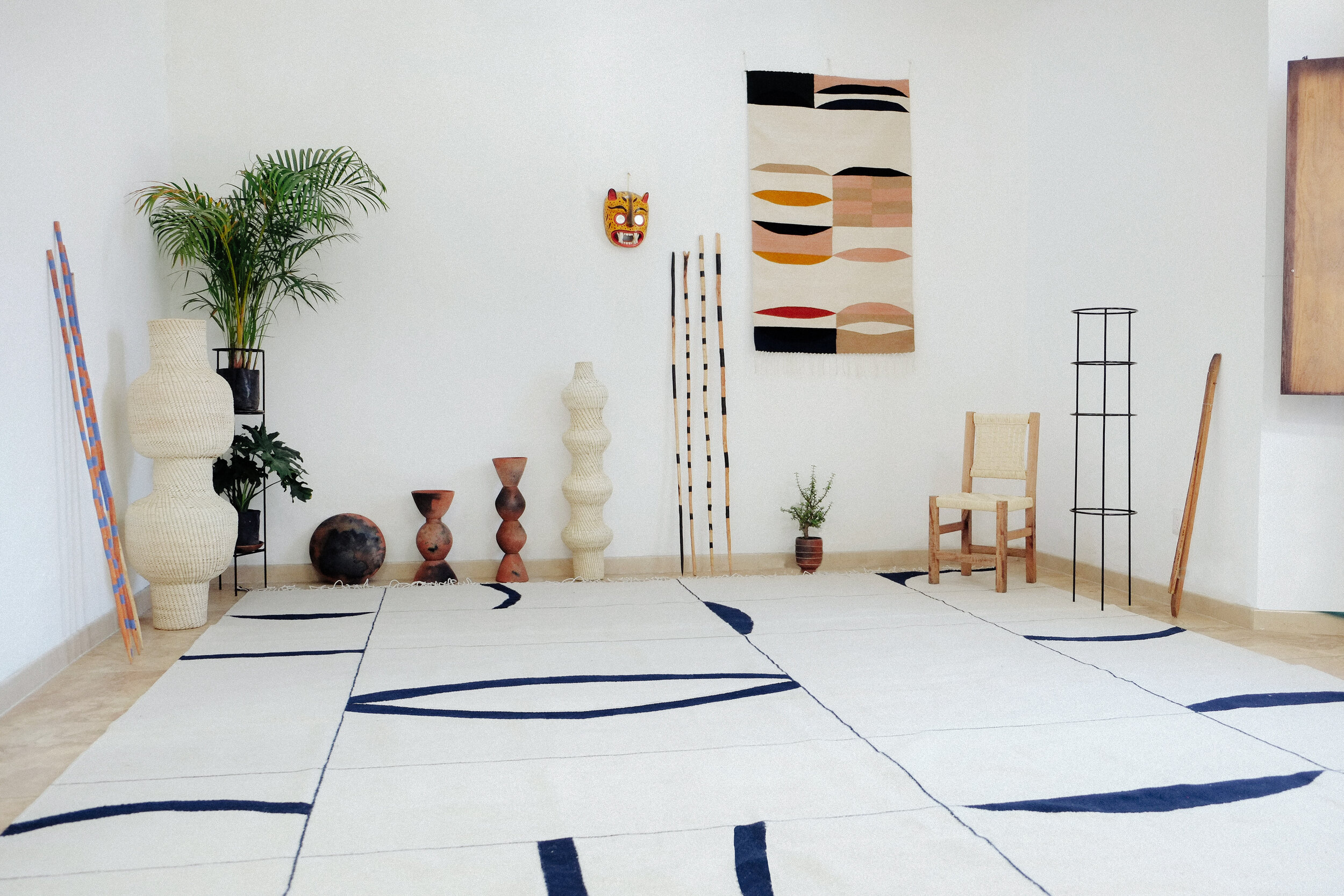
A trip to Oaxaca would not be complete without stopping into designer Javier Reyes' studio, rrres, located in Oaxaca City's colorful Jalatlaco neighborhood. Since 2015, Reyes collaborates with local artisans around Oaxaca to create modern pieces using traditional techniques. His studio is swathed in woven rugs, blankets, pottery, and other interior objects that have come to define the "rrres" identity. But Javier wants to make one thing clear: it's not about the brand. "'The word 'res' in Catalan means 'nothing': 'rrres is my way of saying a brand is not important."
From Reyes' perspective, consumers focus too much on brands and their designers that the essence of the products themselves gets lost in futile marketing campaigns. You won't find a label on any rrres products. Rrres is an amalgamation of Reyes' modern sensibilities woven into the history, traditions, and cultures of the artisan communities with whom he collaborates. Reyes wants to educate his customers by providing a window into the brand's identity, which is a shared one. In this spirit, rrres serves as a lens into centuries-old artisan craft and the communities still working to preserve them.
What is rrres? When did it launch?
I started this project in 2015. 'rrres' means nothing; it’s a word with no direct translation. The word 'res' in Catalan means 'nothing.' It is difficult to name and understand, which is the point. It's my way of saying a brand is not important, and I want to shift the focus on it.
What is your background?
I'm from Santo Domingo, Dominican Republic. I studied arts and graphic design. Since I was very young, I've gravitated towards the visual arts. Photography has always been a passion of mine.
What inspired you to launch rrres?
I was inspired to launch rrres when I returned to Latin America from Spain. After five years of living abroad in Europe, I felt an urge to come back. All those years, I didn't realize how much I missed Latin America. When I started this project, the way I perceive my work and culture began changing. I wanted to understand more of what makes us, Latin Americans, us. I think it's our turn to share our stories and show the rich sides of our cultures that, for many years, people have misconceived. I'm very passionate about this. To create a project where design could tell that story is what excites me.
What was your first impression of Oaxaca?
It all started four years ago, back in 2017. Oaxaca taught me about Latin American history, specifically how different cultures merged in this continent. This place gave me the chance to dive deeper into our stories, and I loved that.

Describe the process and the relationship between you and your artisans.
The first artisans I worked with I lived with for about eight months – and that's how everything started. The main reason I decided to move here is to be close to the artisans. It's essential for the work I want to do with them that I'm in constant and in direct conversation with them in the process. I get to know the families so well that we trust in each other like family. This project is about working together. It's a collective effort. Every member and every part of the process is equally important. That's what I mean when I say 'rrres means nothing' I think that speaks to our essence as Latin American people.
Is there a threat to these ancient artisan techniques? Do you feel a sense of responsibility in helping to preserve them?
Yes, all over the world, artisans are disappearing due to mass industrialization. People want to make and have things faster, cheaper and are choosing quantity over quality. This wave has left craft handmade processes behind. Nowadays, people are so used to the prices big companies are putting in the market that they forget the only reason for those low costs is that there is someone somewhere paying the consequences of it, if not, nature. Younger generations in Latin American communities are not interested in continuing their family tradition, and I completely understand it. Why would someone choose to work for something that provides no future for them or their families?
As a Latin American designer, I feel a sense of responsibility. I need to try to do something with the knowledge and resources I have. This relationship moves both ways; we are all pushing forward, making efforts, and working together to make changes.
What are some of your favorite local spots in Oaxaca?
La Popular in Centro and Sanchez Pascuas market.
Is there a destination you're most looking forward to visiting after Covid?
Colombia sits at the top of the list for every aspect of its culture. I specifically admire how Colombia embraces its different roots: from Caribbean, African, Indigenous, and European origins.
Rrres is located in Oaxaca de Juárez
Calle, 5 de Mayo 217, Barrio de Jalatlaco, 68080 Oaxaca de Juárez, Oax., Mexico


